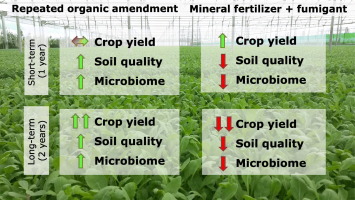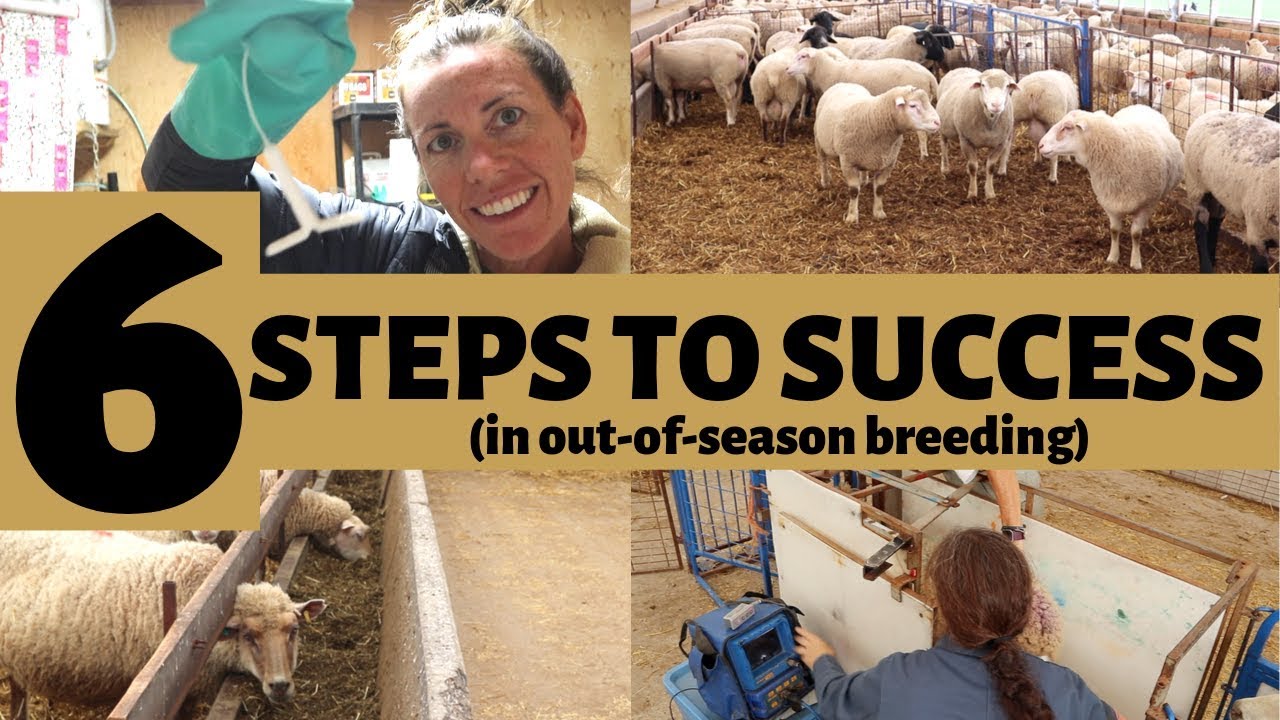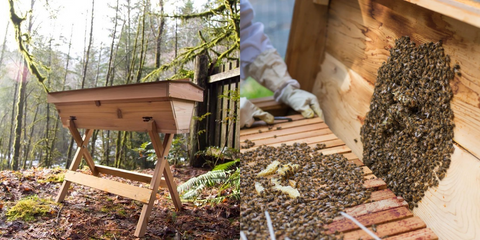Boost soil quality for better crops by adding organic matter and using cover crops. Improving soil quality is critical for enhancing crop growth and yields.
Incorporating practices such as adding compost, using crop rotations, and reducing tillage can enhance soil fertility and structure. The use of cover crops can also provide numerous benefits, such as reducing soil erosion, fixing nitrogen, and improving soil moisture. Soil testing can help identify specific nutrient deficiencies and optimize fertilizer use.
By managing soil health, farmers can improve crop productivity, profitability, and overall sustainability.

Credit: aquaspy.com
Importance Of Soil Quality
To ensure quality crops, soil quality is essential. By boosting soil quality through practices such as adding organic matter, practicing crop rotation, and using cover crops, farmers can improve yield and decrease the need for chemical fertilizers and pesticides.
Factors Affecting Soil Quality
Soil quality is influenced by several factors, including climate, topography, vegetation, and human activities. Improper land use practices such as overgrazing, deforestation, and urbanization can compromise soil health. Soil also undergoes natural processes such as erosion, compaction, and nutrient depletion. Additionally, the type of soil and its nutrient composition significantly impact plant growth.
Table of Contents
Impact Of Poor Soil Quality On Crops
Poor soil quality reduces plant performance and crop yields. Inadequate nutrient supply reduces photosynthesis, the process by which plants produce energy, leading to stunted growth and low yields. The lack of essential nutrients in the soil can result in soil-borne diseases that weaken plants. Soil erosion, also an effect of poor soil quality, can make it difficult for plants to establish their root systems, leading to poor growth and low yields. Hence, poor soil quality can have adverse health, economic and environmental consequences.
Benefits Of Improving Soil Quality
Enhancing soil quality offers numerous benefits that affect crop productivity, farm profitability and the environment. Healthy soil promotes plant growth, leading to higher yields and an increase in farm income. Enhancing soil health allows crops to thrive in times of adverse weather conditions like drought or heavy rain. Good soil quality can reduce the need for chemical fertilizers and pesticides, resulting in cost savings for farmers and an environment-friendly farming practice. Improving soil health also helps reduce greenhouse gas emissions and soil erosion, prevent water pollution, and protect soil biodiversity, which supports natural ecosystems.
In conclusion, soil is the foundation for producing healthy and abundant crops. Soil quality is essential for the productivity and long-term sustainability of agriculture. Therefore, farmers must prioritize practices such as proper land use, crop rotation and cover cropping, which support and enhance soil health.

Credit: rogitex.com
Assessing Soil Quality
Assessing soil quality is an essential step in ensuring that your crops grow healthily and produce the highest yield. Soil quality is determined by various factors such as nutrient content, texture, pH level, and water-holding capacity. Assessing soil quality involves the use of various soil testing methods that help identify the soil deficiencies and determine the right fertilizer requirements your crops need.
Soil Testing Methods
There are various soil testing methods available to help determine soil quality. Among the most common methods are:
| Soil testing method | What it tests for |
|---|---|
| Soil particle size analysis | Sizes of sand, silt, clay in the soil |
| Soil pH testing | Potential acidity in soil |
| Soil nutrient testing | Levels of essential nutrients and minerals in the soil |
| Organic matter testing | Amount and type of organic matter present in soil |
| Soil compaction testing | Density and root growth of soil |
Interpretation Of Test Results
Interpreting soil test results is critical in determining the best course of action to improve your soil quality. Soil test results usually contain a variety of metrics such as soil pH levels, nutrient levels, and organic matter content. The results will guide you on the amount and type of fertilizers and minerals you need to add to your soil to improve its quality.
Identifying Soil Deficiencies
Identifying soil deficiencies is the first step of improving soil quality. Once you have identified a deficiency in your soil, you can take appropriate action to mitigate the problem. Among the most common soil deficiencies are:
- Nitrogen deficiency: indicated by stunted growth and yellowish leaves
- Phosphorus deficiency: indicated by a purple tint on leaves, slow growth and poorly developed roots
- Potassium deficiency: indicated by yellowing of leaf margins, weak stems, and slowed growth.
With this knowledge, you can take steps to provide the necessary nutrients to your soil, which will provide a firm foundation for your crop to grow healthy and productive.
Improving Soil Quality Naturally
Boosting soil quality naturally is essential for better crop yields. Some effective ways to achieve this are by using organic fertilizers, crop rotations, cover crops, and composting. These methods not only improve soil health but also promote a sustainable and eco-friendly farming system.
To achieve healthy and high-yielding crops, it is vital to give attention to soil quality. Poor soil can lead to numerous plant diseases and pests and ultimately poor-quality produce. Enhancing soil quality is an essential way to boost crop yields, and it can be done naturally without spending a lot of money on synthetic fertilizers and harmful pesticides. Here are some effective ways to improve soil quality naturally:
Composting
Composting is one of the best ways to nourish soil naturally. It is an easy, inexpensive and environment-friendly way to boost soil quality. Composting involves the collection of organic waste materials, such as food scraps, leaves, and grass clippings. The decomposed materials can then be used as a soil amendment to boost the soil’s water-holding capacity, nutrient content, and overall fertility. Composting also helps to reduce the volume of waste in landfills, making it great for the environment.
Cover Cropping
Another effective way of improving soil quality is through cover cropping. Cover crops are mostly plants that are grown in between planting seasons to cover the soil surface. They help to protect the soil from erosion and nutrient depletion. Leguminous cover crops, like clover, can also fix nitrogen in the soil, which enhances the growth of other crops. Cover crops also encourage beneficial microbes, fungi, and insects that help to keep the soil healthy.
Crop Rotations
Crop rotation is another natural and effective way to improve soil quality. It is a simple practice of alternating crop varieties in the same field season after season. Crop rotation helps to reduce disease and pest infestations by breaking up the reproductive cycle of pests that feed on specific crops. This technique also helps to improve soil structure and nutrient content by ensuring that the same nutrients are not continually drawn from the soil season after season.
In conclusion, improving the soil naturally is one of the best practices for boosting crop quality. Simple practices, such as composting, cover cropping, and crop rotation, can significantly enhance soil quality. Adopting these natural techniques can help to eliminate the reliance on synthetic fertilizers and pesticides, making farming activities environment-friendly and sustainable.
Chemical Soil Amendments
Improving soil quality can lead to better crops, and chemical soil amendments are a great way to achieve that. They involve adding nutrients and organic matter to the soil, which can improve its structure and fertility, ultimately leading to healthier plants and higher yields.
Chemical Soil Amendments are one of the most commonly used soil improvements by farmers and gardeners to boost soil quality and produce better crops. It involves the addition of inorganic compounds to soil, which can provide nutrients that improve plant growth and yields. However, it is important to note that the inappropriate use of chemical amendments can harm the soil’s health, environment, and human health. Therefore, it is essential to understand the types of soil amendments, appropriate timing for application, dosage, and application methods to ensure the best results.
Types Of Soil Amendments
There are various types of chemical soil amendments available based on their nutrient composition, such as nitrogen, phosphorus, potassium, and trace elements. The following table shows some popular types of chemical soil amendments and their nutrient content:
| Types of Chemical Amendments | Primary Nutrients | Secondary Nutrients | Trace Nutrients |
|---|---|---|---|
| Lime | Calcium, Magnesium | ||
| Urea | Nitrogen | ||
| Super phosphate | Phosphorus | Calcium | |
| Potash | Potassium |
Appropriate Timing For Application
Applying chemical soil amendments at the appropriate time is critical to ensure their effectiveness. Applying them too early or too late can cause imbalances in the soil’s nutrient content, leading to poor plant growth, reduced yields, or environmental damage. Typically, the best time to apply chemical amendments is during the soil preparation phase, before planting or sowing. This allows ample time for the amendments to mix well with the soil and provide sufficient nutrients for plant growth.
Dosage And Application Methods
The dosage and application method of chemical soil amendments depend on various factors, such as soil type, crop type, nutrient requirements, and the type of amendment used. Excessive use of amendments can lead to leaching and runoff, which can cause environmental pollution. Therefore, it is crucial to follow the recommended application rates and methods specified by the manufacturers or local agricultural authorities. The following are some common application methods:
– Broadcasting: evenly spreading the amendments over the soil’s surface and then tilling them into the soil.
– Row application: applying the amendments in bands along the crop rows before planting.
– Side dressing: applying the amendments in a trench alongside the crop row after planting.
In conclusion, Chemical Soil Amendments can significantly improve soil quality and crop yields if used correctly. Understanding the types of amendments, appropriate timing for application, dosage, and application methods are essential to achieve the best results. It is important to note that chemical amendments should be used with care and consciousness to avoid environmental and health risks.
Irrigation Strategies
Effective irrigation strategies can greatly improve the quality of soil and lead to better crop yields. By using methods such as drip irrigation and crop rotation, farmers can minimize water waste and reduce soil erosion, resulting in healthy and sustainable soil for growing crops.
When it comes to growing healthy crops, soil quality is of utmost importance. One of the best ways to boost soil quality is through proper irrigation. Irrigation is the process of supplying water to crops. However, irrigation must be done properly to avoid waterlogging, nutrient loss, and other issues. Understanding the importance of proper irrigation, types of irrigation systems, and effective watering techniques can help you improve the quality of your soil and boost crop yield.
Importance Of Proper Irrigation
The importance of proper irrigation cannot be overemphasized. Irrigation leads to the healthy growth of crops by providing water to plants. Water is essential for nutrient uptake, photosynthesis, and other plant processes. Proper irrigation also prevents soil erosion, which can lead to soil nutrient depletion. Watering is especially important during the early stages of plant growth when roots are developing.
Types Of Irrigation Systems
There are various types of irrigation systems that you can use to irrigate your crops. The type of irrigation system you choose depends on the size of your farm, the type of soil you have, and the crops you are growing. Some common irrigation systems include:
| Type of Irrigation System | Description |
|---|---|
| Sprinkler Irrigation | A sprinkler system distributes water through the air onto crops. |
| Drip Irrigation | Water is slowly dripped directly onto the roots of plants. |
| Flood Irrigation | Water is flooded onto the field. It is best suited for flat fields with a heavy clay soil type. |
| Center Pivot Irrigation | A circular system of sprinklers that rotates around a pivot point. |
Effective Watering Techniques
Effective watering techniques are essential for proper irrigation. Some tips for effective watering include:
- Water your crops early in the morning or late in the evening when temperatures are cool. This reduces evaporation.
- Water the roots of plants instead of the leaves. This prevents the growth of fungal diseases.
- Do not water your crops excessively, as this can lead to waterlogging and soil nutrient depletion.
- Use mulch to help conserve moisture in the soil.
- Monitor your soil moisture levels regularly to ensure that your crops are not under or over-watered.
By incorporating these effective watering techniques, you can boost crop yield while keeping soil quality intact. Consider adopting a proper irrigation strategy that is best suited for your farm, and always remember to water your crops properly to enjoy the benefits of healthy and nutrient-filled produce.
Soil Erosion Prevention
Boosting soil quality is essential for better crop yields, which can be achieved by implementing soil erosion prevention techniques. These include using cover crops, reducing tilling, and maintaining groundcover to prevent soil runoff and degradation.
As a farmer or gardener, preventing soil erosion is essential to maintain soil health and promote better crop yields. Soil erosion is a natural process that can be accelerated by factors such as deforestation, overgrazing, and tillage practices. It is vital to understand the causes and effects of soil erosion to take preventive measures. Let’s explore some of the methods to prevent soil erosion and ways to create soil barriers.
Causes And Effects Of Soil Erosion
Soil erosion is caused by several factors, both natural and human-induced. The natural factors include wind and water, while the human-induced factors include improper land use, overgrazing, and deforestation. Soil erosion can have severe consequences, including loss of topsoil, lower water retention, and reduced crop productivity. The loss of soil nutrients can lead to low crop yields, while the sedimentation of rivers and lakes can harm aquatic ecosystems.
Methods Of Erosion Prevention
Preventing soil erosion is crucial to maintain soil fertility, preserve biodiversity, and promote sustainable agriculture. The following are some of the effective methods of erosion prevention:
- Conservation Tillage – This method involves leaving the residue of the previous crops on the soil surface. It reduces soil disturbance and improves water infiltration, thus preventing soil erosion.
- Crop Rotation – This method helps prevent soil erosion by reducing soil compaction and improving soil structure. It also reduces soil-borne diseases and pests, thus promoting healthier crops.
- Cover Crops – Planting cover crops like legumes can improve soil health and prevent soil erosion. Cover crops help maintain soil moisture, reduce nutrient leaching, and increase soil organic matter content.
Creating Soil Barriers
Creating soil barriers is another effective way to prevent soil erosion. The following are some ways to create soil barriers:
- Contour Farming – This method involves planting crops along the contour lines of sloping land, thus creating natural barriers. It reduces water runoff and prevents soil erosion by trapping sediments.
- Terracing – Terracing involves creating leveled steps on steep slopes to slow down water and soil movement. It also provides an ideal platform for planting crops.
- Windbreaks – Planting windbreaks like trees, shrubs, or grasses can reduce wind speed and trap soil particles, thus preventing soil erosion.
In conclusion, preventing soil erosion is crucial for sustainable agriculture and better crop yields. Understanding the causes and effects of soil erosion and implementing methods of erosion prevention can help protect soil health and promote environmental sustainability.
Integrated Pest Management
Integrated Pest Management (IPM) is a technique that can improve soil quality and produce better crops. By utilizing natural methods to manage pests and diseases, soil can remain healthy and support plant growth. Additionally, IPM reduces the use of chemical pesticides that can harm the environment and negatively impact soil.
Integrated Pest Management is an essential component of sustainable agriculture. It is a holistic approach to pest management that seeks to control pests while minimizing harm to people and the environment. IPM involves the use of various techniques such as crop rotation, biological control, and habitat manipulation to reduce the use of pesticides. In this blog post, we will discuss the benefits of IPM, the importance of identifying and monitoring pests, and natural pest control methods that farmers can use to boost soil quality for better crops.
Benefits Of Ipm
IPM brings numerous benefits to farmers who want to improve the soil quality of their farms. Below are some of the benefits:
- Reduced dependency on pesticides: With IPM, farmers can reduce their reliance on pesticides, which can be harmful to the environment and human health.
- Cost savings: Since IPM involves the use of multiple techniques, farmers can save money on pesticides, and other pest control measures.
- Better crop yields: IPM techniques can help to improve soil quality, reduce crop losses due to pests, and increase yields.
- Improved soil health: By using practices that promote soil health, such as crop rotations and soil amendments, farmers can improve the quality of their soil and the health of their crops.
Identification And Monitoring Of Pests
Identification and monitoring of pests is a crucial part of IPM. Farmers should be able to identify the pests that are present in their fields, as well as their life cycles, and the damage they cause. By monitoring the pests, farmers can determine when and how to control them effectively.
Pests can be monitored using several techniques, such as visual inspections, sticky traps, and pheromone traps. These methods can help farmers to identify the pests that are present, their population density, and the damage they are causing to the crops. Farmers can also keep records of pest populations, which can help them make informed decisions about pest control methods.
Natural Pest Control Methods
Natural pest control methods are an essential part of IPM. Below are some examples:
| Natural pest control methods | How it works |
|---|---|
| Biological control | The use of natural predators, such as ladybugs and birds, to control pests. |
| Crop rotation | Planting different crops in rotation to reduce pests that thrive on a single crop |
| Companion planting | Planting crops that have a natural ability to repel pests, such as marigolds and onions, alongside other crops |
| Soil amendments | Adding natural substances, such as compost and manure, to the soil to improve its quality and reduce pest problems |
By using these natural pest control methods, farmers can improve the soil quality of their farms and promote healthy crops. Additionally, these methods are cost-effective and environmentally friendly, making them the perfect choice for sustainable agriculture.
Maintaining Soil Health
Healthy soil is essential for high-quality crops. Maintaining soil health involves various activities that ensure the soil structure, nutrients, and organisms are in optimal condition for plants to grow. In this article, we will explore long-term soil management strategies, regular soil testing and analysis, and avoiding soil compaction, all of which are critical to maintaining optimal soil health.
Long-term Soil Management Strategies
Regularly implementing long-term soil management strategies is essential in maintaining optimal soil health. Some of the best strategies include:
- Reducing tillage through minimum tillage or no-till farming practices, which helps protect soil structure and minimize erosion
- Adding organic matter such as compost, manure, and cover crops, which enhances soil fertility and helps to improve overall soil health
- Rotating crops that have different nutrient requirements or growth patterns, which helps prevent the depletion of specific nutrients and can help prevent pest and disease build-up
Regular Soil Testing And Analysis
Regular soil testing and analysis is vital in maintaining optimal soil health. It helps to determine the pH levels, nutrient levels and deficiencies, toxicity levels, and organic matter content of the soil. This information is essential in developing a plan for soil management. A few benefits of regular soil testing and analysis include:
- Maximizing plant growth by ensuring the soil is rich in essential nutrients such as nitrogen, phosphorus, and potassium
- Identifying nutrient deficiencies and allowing for the application of specific fertilizers to meet the plant’s needs
- Preventing overapplication of fertilizers, which can harm plants and negatively impact the environment
- Estimating the potential yield and quality of crops and evaluating the effectiveness of soil management practices
Avoiding Soil Compaction
Soil compaction occurs when soil particles are pressed together, reducing the spaces between them. Compacted soil leads to poor aeration, reduced water infiltration, and limits root development, all of which negatively impact crop growth. Here are a few ways of avoiding soil compaction:
- Avoid working the soil when it is too wet or too dry
- Use planting techniques that minimize soil disturbance
- Implement conservation tillage practices, such as no-till or minimum tillage farming to protect soil structure
- Reduce the use of heavy machinery on soil, and minimize foot and vehicular traffic in fields
Overall, maintaining soil health is crucial in achieving higher crop yields and preventing soil degradation. Regular soil testing and analysis, avoiding soil compaction, and implementing long-term soil management strategies are all ways of achieving optimal soil health.

Credit: medium.com
Conclusion
To sum up, improving soil quality is vital for increased yield and crop quality. It is important to understand the soil’s needs and take necessary actions to enhance its fertility. Regular soil testing, adding organic matter, balancing pH levels, and proper crop rotation are key to achieving optimal soil quality.
By implementing these practices, farmers and gardeners can guarantee success and sustainability while contributing to a healthier planet. Boosting soil quality not only improves crop yields, but it also supports biodiversity, enriches soil diversity, and promotes environmental conservation.








